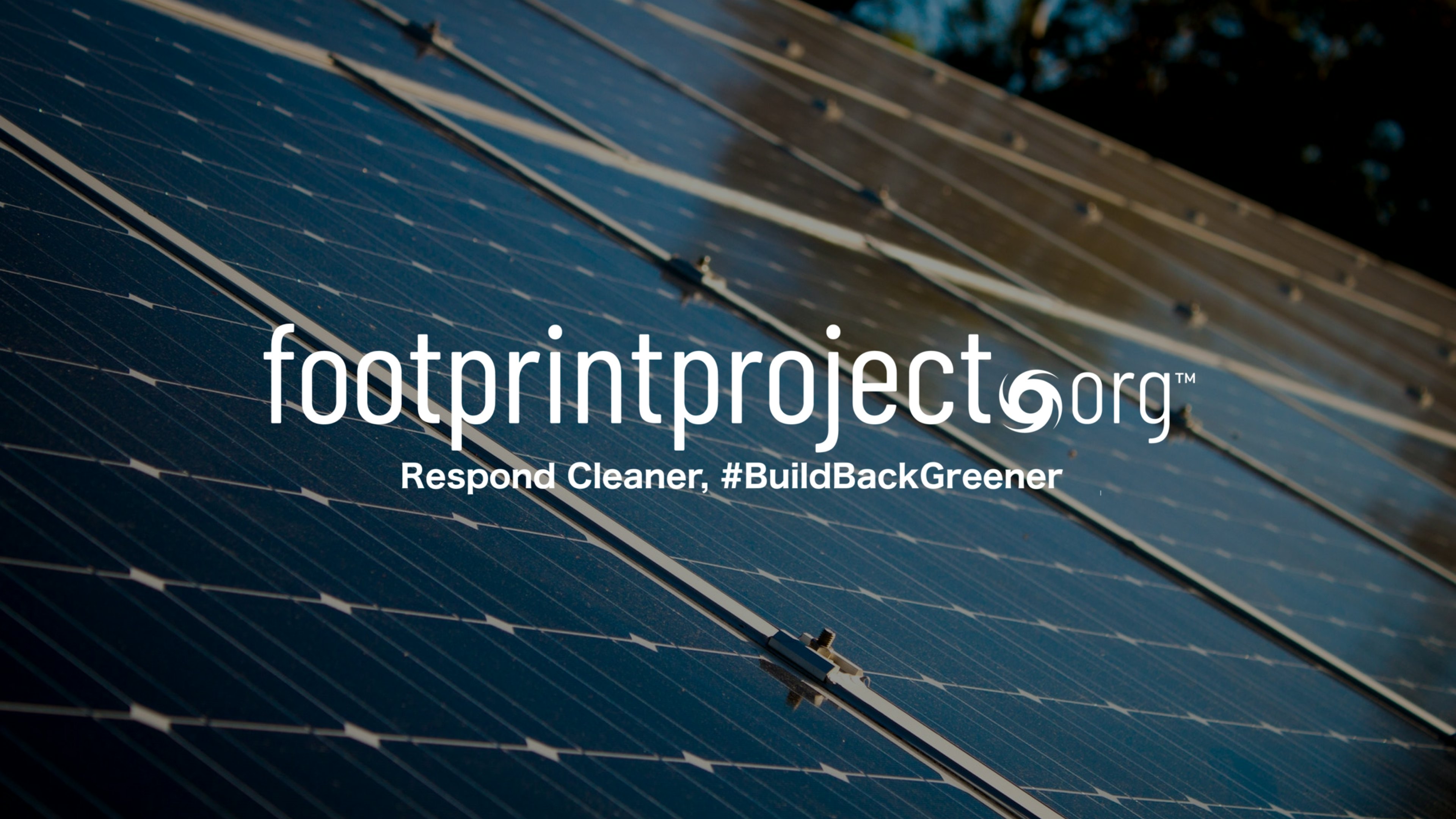How to read your electric bill: 5 things to know
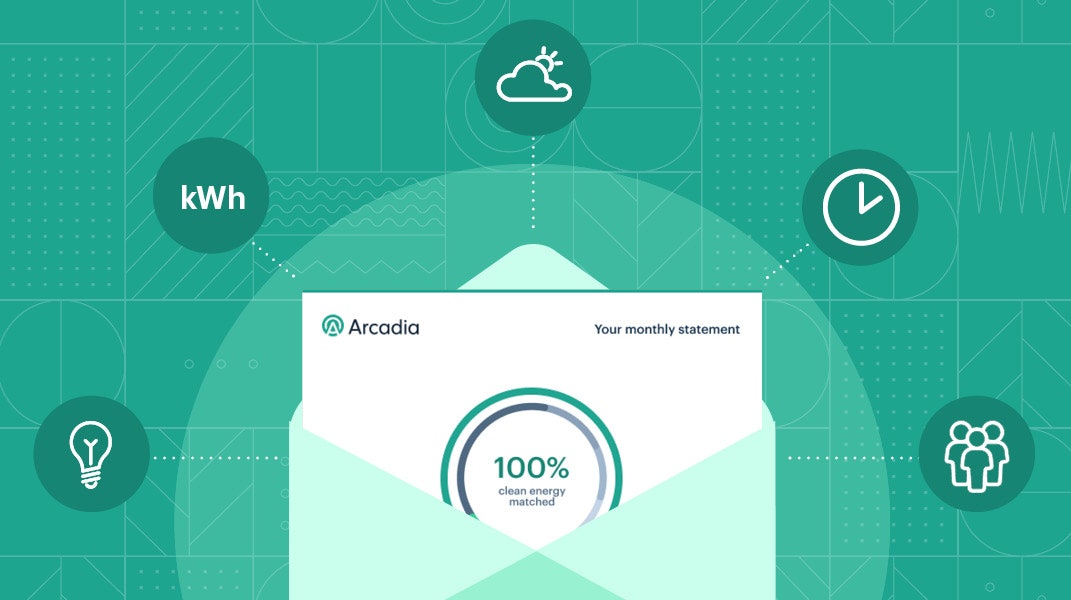
This article was originally published in July 2020. It has been updated to reflect new stats and insights as of August 2024.
When was the last time you took a good, hard look at your power bill? While understanding your electricity consumption may seem like a complex task, it’s actually pretty straightforward once you have a foundational knowledge of the key terms and concepts.
Knowing how to read your electric bill helps you ensure billing accuracy, improve energy and manage costs. To achieve this, let’s walk through 5 essential areas related to your bill:
- What is a kilowatt-hour (kWh)?
- What’s on your electric bill?
- What’s a typical monthly electric bill?
- What impacts the size of your electric bill?
- How can you lower your average cost per kWh?
What is a kilowatt-hour (kWh)?
To understand how to read your electric bill, you must first learn what a kilowatt-hour (kWh) is. A kWh is the unit of measurement for electricity consumption. It’s actually two measurements in one: speed and time. Wattage measures how fast electricity is being used, and time measures how long that electricity is being consumed at that speed.
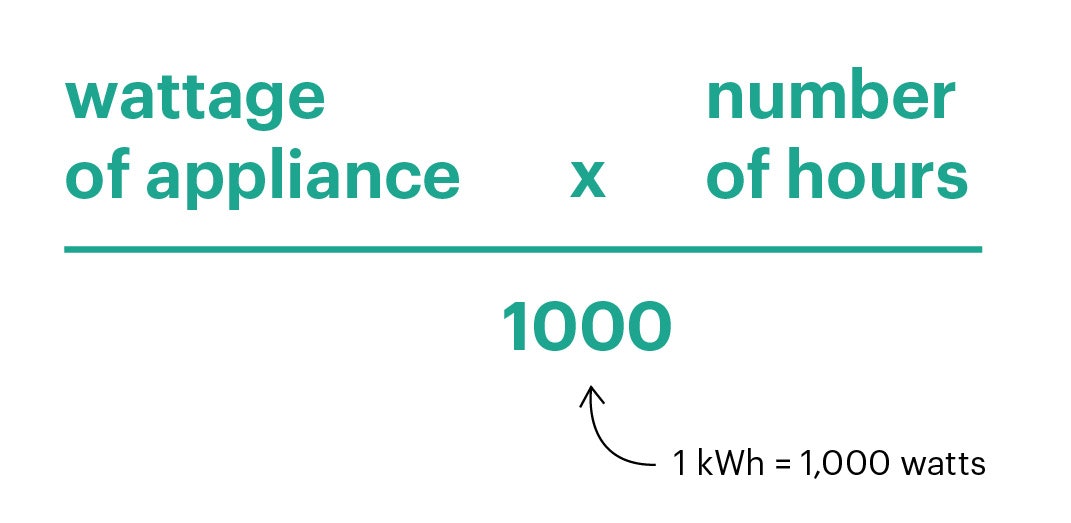
Put another way, if you multiply the wattage of any appliance by the number of hours you use that appliance and then divide by 1,000 (one kilowatt equals 1,000 watts), you’ll have the kWh measurement for that appliance. For example, a TV rated at 50 watts that is on for five hours will consume 0.25 kWh. You can do this for almost any appliance — wattage is usually printed on the device itself.
What does one kWh look like in practical terms? Here are a few examples of one kWh in action:
- Charging your phone for two hours a day for a month.
- Running your microwave for two minutes every day for a month.
- Operating two desktop computers during an eight-hour workday.
- Running a 60-watt light bulb from sunrise to sunset.
- Cooling a room with one medium window AC unit for an hour.
What’s on your electric bill?
Your electric bill may include two separate parts:
- A high-level overview that includes your basic account information, bill summary, current charges, and electric price.
- A more comprehensive breakdown of your energy consumption.
It’s important to understand the different elements of the energy breakdown on your bill, which typically include:
- Meter reading
- Breakdown of services and pricing
- Usage profile
Meter reading
Your meter information will show the date the meter was read as well as your current and previous meter readings. The difference between your previous and current meter readings is the number of kWh of electricity you used in the billing period. So if your previous meter reading was 45,004 kWh and your current meter reading is 45,426 kWh (as in this sample Eversource bill) then you used 422 kWh during that period.
Breakdown of services and pricing
This part of your bill shows all the different services that are part of getting energy to your home. You’ll usually see transmission charges, generation charges, customer charges, and distribution charges. These charges make up the bulk of your bill.Each type of charge will have a different price per kWh. These prices are calculated by multiplying your current kWh used by the set rate for each charge.
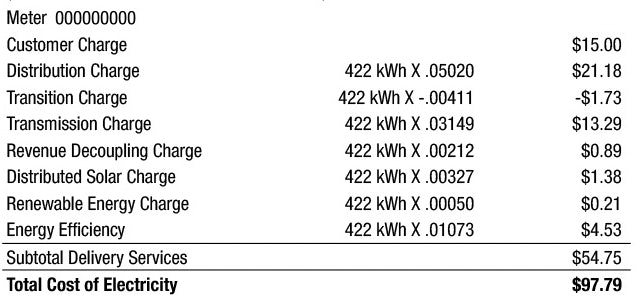
Usage profile
This section usually has two parts. One will show you the total kWh that you’ve used in previous months, while the other will show your kWh usage for the current month and same month the previous year.
Your usage profile gives a high-level view of your energy consumption patterns. You’ll be able to see the points in the year when you use the most energy, which means you can make informed changes to your energy consumption habits that can save money in the long run.

What’s a typical monthly electric bill?
Your monthly energy costs will depend on your location, type of residence, and how many people live with you.
One-bedroom apartment
A monthly electric bill for a one-bedroom apartment will likely stay around $30-50. That’s without air conditioning, though. Typically, air conditioning costs $250-300 a year to run. However, AC costs will likely be concentrated in the warmer months (an extra $50-90 per month during the summer) unless your utility provider offers an option for “budget billing,” which spreads energy charges out evenly over the year.
Three- or four-bedroom house
According to the Energy Information Administration, the average US home uses 899 kWh of energy per month. The average electricity rate in October 2023 was 16.21 cents per kWh, which means the average home electric bill is around $145. Keep in mind that electricity costs vary widely by location; the average residential consumer in Hawaii spends $203 a month on electricity while the average residential consumer in Utah spends $79 a month.
What impacts the size of your electric bill?
Energy generation mix
Do you ever think about what resources go into generating the electricity that you use? That mix of resources helps determine the cost of your power. The US Energy Information Administration projects that coal-fired generation will decrease by 9% in 2024 and 10% in 2025, largely due to increased natural gas and renewable energy generation.
Because the cost of natural gas generation is rising due to increased demand and global supply factors, interest in renewable energy is increasing. In fact, many homeowners and renters have successfully reduced the cost of their monthly electric bill with clean energy such as solar panels and community solar.
Rate structures
The price you pay per kWh will depend on what type of energy rate (aka tariff) you have. Rates vary by state. Some states have regulated markets, while others have deregulated markets. What does this have to do with rate structure? In deregulated markets, you can shop for better energy rates.
Rates fall into four categories:
- Fixed rates: These are exactly what they sound like — rates that don’t change. Your utility company will charge a specific amount per kWh used. You may see additional fees at times, but overall a fixed rate is predictable and simple to calculate.
- Variable rates: Variable rates fluctuate on a month-to-month basis. Utility companies implement variable rates in different ways. Some will charge a higher rate during summer and winter because people use more electricity to stay cool or warm. Some will charge a low fixed rate for a specific number of kWh used and then a higher rate for any kWh beyond that. Time-of-use rates may be part of variable rates, too.
- Time-of-use rates: Under time-of-use rates, you pay more or less for energy depending on what time of day you use that energy. During peak hours (e.g., first thing in the morning or in the evening after work), some utilities will charge more for electricity because demand is high. If you’re on a time-of-use rate, shift some of your electricity use to off-peak times to lower your bill (e.g., run your dishwasher overnight).
- Demand rates: Demand rates are typically reserved for commercial or industrial buildings, but may be an option for residential consumers. They are based on your peak electricity usage. If your business requires high energy usage during peak times, you’ll be responsible for an added charge on your total bill.
Weather
Climate change has led to more extreme seasons and storms all around the US. People need to use more energy to stay comfortable during hotter summers and colder winters. That means higher energy bills, either because you’re using more electricity — heating and cooling account for about half of electric bills — or because your utility is charging peak rates.
That’s why you need to take advantage of spring and fall. When the weather is milder, you can make small lifestyle adjustments that will benefit you (and your bill) in the long run. Open the windows instead of cranking up your AC. Put on a sweater when there’s a chill in the air. Even small changes can lower your energy bill.
Insulation
The quality of your home’s insulation plays a major role in the size of your energy bill. Strong insulation makes your home more energy efficient, which means it will stay cooler in the summer and warmer in the winter. Without proper insulation, much of the energy you use to heat or cool your home will leak out.
Luckily, there are many ways to improve your home’s insulation, including fixing cracks and crevices around your windows and using window blinds to keep your home cooler. Any improvements you can make will help lower your monthly energy bill. The Environmental Protection Agency (EPA) estimates that homeowners can save an average of 11% on total energy costs with better sealing and insulation.
Personal habits
The electronic devices you use in your everyday routines are another major factor in your energy bill. When you use those gadgets can make a big difference in your bill, especially if your utility charges more for electricity during peak times.
Changing your personal habits can help you save money on time-of-use rates. Rather than using your evenings to watch TV, for example, you might catch up when you have a free morning or afternoon. Do chores that require more electricity, such as running the dishwasher or doing laundry, earlier in the day or later at night to reduce peak-time energy use. Your bill will thank you.
Number of occupants
This one’s simple — the more people you have in your house, the more energy you will use. With more people watching television, cooking, washing clothes, and keeping lights on, it makes sense that your energy bill will be higher.
How can you lower your average cost per kWh?
While your electric bill contains some factors that are outside your control, you can still take small steps to lower your average cost per kWh. These include:
- Conduct a home energy audit: Take a few minutes to understand how many kWhs of energy your daily appliances and devices are using so that you can be more intentional about what you use, and when. You can reference the guidance above to convert wattage to kWh for your appliances.
- Monitor when you’re using major appliances: Obviously, you can’t turn off your refrigerator when you’re not home. But you can ensure you’re using the appliances that require the most energy in the most efficient way. Set the defrost cycle on your refrigerator to run in the early morning instead of the evening, for instance. If you can hang dry your laundry, do that instead of running your dryer, or run your dryer first thing in the morning.
- Use smart power strips to reduce idle power usage: Smart power strips reduce the power flow to vampire power sources, or devices that drain energy even when you’re not using them. You can lower your idle power usage by plugging your television, computer, and any other high-energy usage device into a smart power strip.
- Switch your light bulbs out for LED bulbs: Once you begin using LED bulbs, you’ll never turn back. Although they may cost slightly more than incandescent bulbs up front, LED bulbs use 75% less energy than incandescent bulbs and last far longer.
- Take shorter showers: This tip is simple but true. Not only will taking shorter showers reduce your energy bill (less time heating all that water), it will also lower both your water and carbon footprints.
- Clean and maintain your air filters: Because your HVAC system is such a big contributor to your power bill, it’s important to make sure it’s running efficiently. If you neglect your air filters, your HVAC unit’s performance will steadily decline while your energy use will steadily increase. The Department of Energy estimates that replacing an old, clogged air filter can lower your HVAC’s energy consumption by 5-10%.
None of these are complicated or particularly time-consuming tactics, but doing even a few of them could help you save as much as 25% on your electric bill.
Save money on your bill
Now that you understand how to read your electric bill as well as some basic tips for reducing costs, you may be wondering, “Is there any way to save more on my monthly bill?” We recommend community solar as the ideal way to achieve annual savings on your electric bill. There’s no installation, and no added costs — just a few clicks is all it takes to get started.
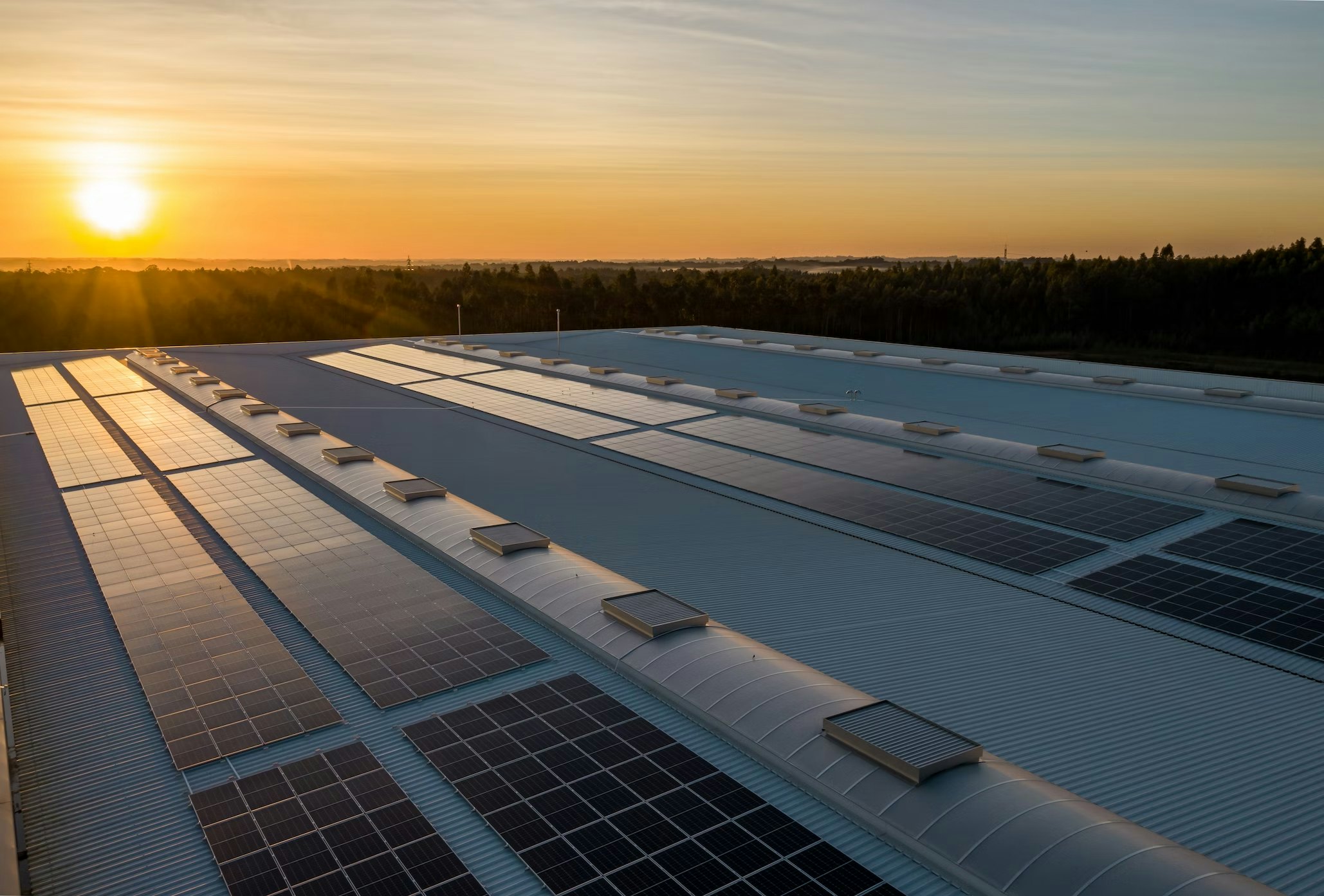
Ready to make an impact? Sign up for Arcadia community solar today!
Get started

